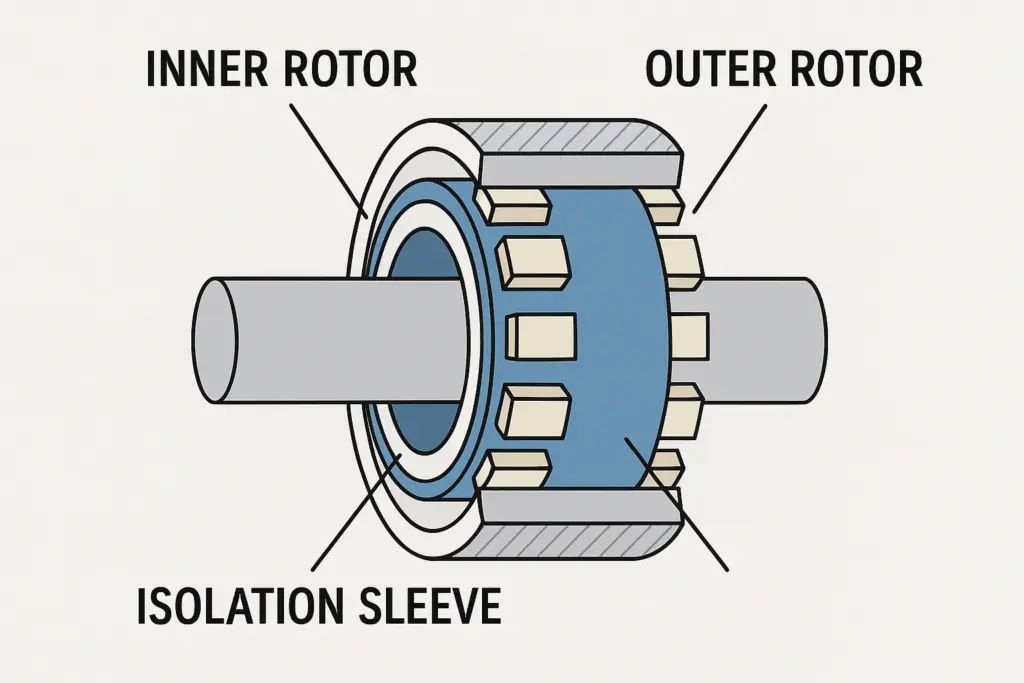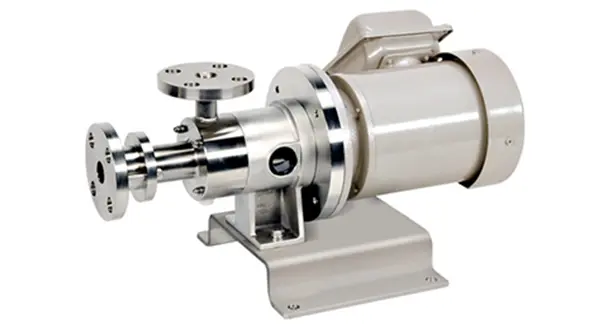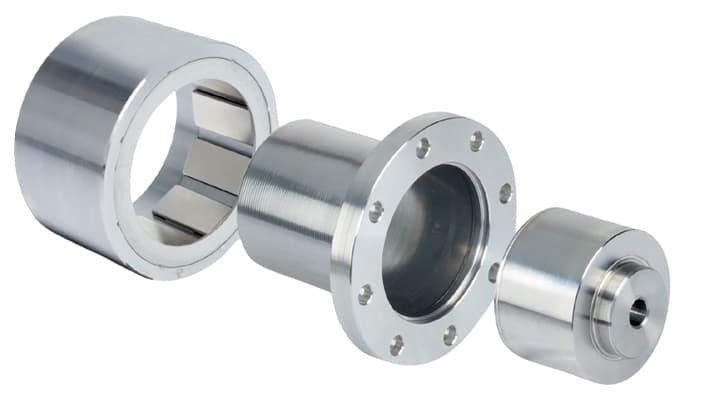A magnetic coupling primarily consists of two core components: an outer rotor and an inner rotor.
- Outer rotor: The inner wall of the outer rotor is embedded with high-performance permanent magnets, arranged in alternating north and south poles.
- Inner rotor: Equipped with corresponding magnets arranged in opposite polarity, its outer circle is precisely machined to minimize clearance.
- Isolation sleeve: Positioned between the two rotors, this barrier prevents leakage of dielectric fluid while maintaining magnetic field integrity.
This non-contact design allows torque to be transmitted across the isolation barrier without physical connection.
Principle of Torque Transmission
In a stationary state, the north and south poles of the inner and outer rotor magnets align symmetrically, forming a stable magnetic field.
When torque is applied:
- The inner rotor twists relative to the outer rotor.
- This twist causes the magnetic field lines to deflect.
- The deflection generates a restoring magnetic force, which transfers torque from the driving side (outer rotor) to the driven side (inner rotor).
During stable operation, the relative torsion angle remains constant, enabling synchronous, non-contact torque transmission.

Overload Protection Mechanism
One of the unique advantages of magnetic couplings is their built-in overload protection:
- When the applied torque exceeds the coupling’s rated capacity, the inner and outer rotors slip relative to each other.
- This slip interrupts torque transfer, protecting the system from damage.
- Once the overload (e.g., bearing failure, shaft blockage) is cleared, the rotors automatically re-synchronize, allowing normal operation to resume.
This self-protecting characteristic extends equipment life and reduces unplanned downtime.
Advantages of Magnetic Coupling
Magnetic torque transmission offers several operational benefits compared to conventional mechanical couplings:
- Leak-free operation: No physical contact means no risk of fluid leakage, making it ideal for chemical, pharmaceutical, and vacuum systems.
- Maintenance-free: With no mechanical wear and tear, maintenance requirements are minimal.
- High reliability: Built-in overload protection reduces the risk of equipment failure.
- Non-contact design: Ensures smooth, vibration-free torque transfer even in demanding applications.
Industrial Applications
Magnetic couplings are widely adopted in industries where sealing, reliability, and safety are critical:
- Chemical and petrochemical plants – to prevent leakage of corrosive or hazardous fluids.
- Pharmaceutical and food processing – ensuring contamination-free, hygienic operation.
- Vacuum and semiconductor equipment – enabling non-contact torque transfer in sealed environments.
- Pump and compressor systems – enhancing durability and reducing energy losses.

Conclusion
Magnetic coupling torque transmission combines advanced magnetic design with practical engineering advantages. By replacing direct mechanical connections with non-contact, magnetically synchronized torque transfer, industries can achieve:
- Higher operational safety
- Reduced maintenance costs
- Reliable overload protection
In environments where leakage prevention and system reliability are paramount, magnetic couplings represent a superior choice for modern industrial applications.
👉 Discover more innovative solutions and explore our full product range on at HSMagnet.


Leave a Reply